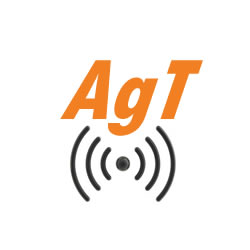This blog explores specific needs and major challenges encountered in sugarcane cultivation. As we detail every vital stage, we show how adopting agritech platforms like Cropin for data-driven decision-making is essential for farmers and businesses alike. It drives smart farming to secure resilient yields and future-proof the industry.
Importance of sugarcane in the global economy
Why sugarcane matters
The economic and ecological significance of sugarcane goes far beyond sweeteners!
With rising demand for both food and fuel, sugarcane stands at the intersection of agriculture and energy.
What are some challenges in sugarcane cultivation
As sugarcane is a climate-sensitive crop, it is extremely vulnerable. Farmers from America to Asia face a host of challenges, like:
What are sugarcane growing conditions
While sugarcane is an easy crop, getting a high-sugar harvest requires giving it exactly what it wants over its 12-18-month cycle, depending upon sowing time and variety.
Data-driven field selection using cropin cloud platform
Pre-planting practices
Land preparation is the first step in agriculture, as it is crucial for root formation and nutrient uptake. Sugarcane requires deep ploughing (depth of 30-60 cm), often followed by harrowing, ensuring a fine tilth for water movement and root penetration. After tillage soil must be levelled to improve water penetration and control waterlogging. Fertile soil always results in good harvests. To improve soil structure, fertility, and microbial activity, you need to add 25-30 tonnes per hectare of organic matter (farmyard manure or compost). After prepping up the soil, next choose the perfect sugarcane variety considering its maturity period, resistance to pests and diseases, and yield potential.
Switching cultivation with crops like alfalfa, paddy, or wheat naturally improves soil health and helps keep pests in check. Many farmers also find success by intercropping with quick-growing crops like onions, potatoes, or soybeans.
Cropin Cloud platform leverages satellite monitoring and our proprietary crop knowledge graph, and enables you to seamlessly capture:
Now that you have data on the impact of productivity with different crop rotation practices across the growing season, you strategically choose the perfect option for your region.
Planting
When to plant sugar cane?
The digitization twist
Planting methods
Sugarcane planting isn’t one-size-fits-all; you choose your method based on your climate, water supply, and machinery.
Growth stages in sugarcane cultivation
1. Germination (0-60 days): Once the setts are planted, buds on the setts sprout, and first leaves emerge quickly, growing into independent shoots. Getting this right is vital! You need warm temperatures and plenty of soil moisture (70–80%) for sprouting and root establishment. Be careful: dry spells will delay the whole process, but too much water or waterlogging can risk disease and literally suffocate the roots. Weed scouting is crucial during this stage to ensure healthy crop establishment. Application of a pre-emergence herbicide, ideally within three days after planting, helps effectively suppress early weed growth.
To overcome these adverse scenarios, Cropin’s weather forecast helps by raising alerts well in advance to adopt an optimum irrigation schedule and proper management practices.
2. Tillering (60-150 days): Tillering is the phase of intense vegetative growth where the primary shoots multiply by producing secondary shoots (tillers) from the base of the plant. This period is marked by the formation of the maximum number of stalks (tillers) per planted unit, and the root system develops rapidly. Plants require optimal fertilization, particularly nitrogen, and sufficient moisture is crucial to support this rapid multiplication and canopy development. Beware of low soil moisture (below 60%) and drought conditions now! This means minimizing tiller counts, low cane density, and reduced yield potential.
Sugarcane smut and Grassy shoot (common in ratoon crop) are some major prevailing diseases in the tillering stage. These reduce cane count, sugar concentration, and juice quality, ultimately leading to significant yield loss.
3. Grand growth or stem elongation (150-240 days) – The Critical Stage: At this stage, tiller stabilization, cane formation, and elongation occur. This is the longest and most critical stage for biomass accumulation, marked by rapid leaf production and the appearance of 4 to 5 internodes per month. The stalks lengthen quickly, gaining maximum height, girth, and total biomass before sugar accumulation begins. The lower internodes of the stalks become visible and harden.
Some common diseases, like Fusarium wilt and Red Stripe, tend to occur predominantly during the grand growth period of sugarcane. They severely affect the quality and yield, as potential losses can reach up to 84%.
4. Maturation and ripening (240 days-harvest depending on variety): In this final stage, the sugarcane prepares for harvest by concentrating sugar in the stalks. Maturation of the plant is determined by the sucrose (sugar) level in the stems. By harvesting time, the stems should accumulate at least 12-14% of sugar in the form of sucrose. Stalk elongation slows or stops. The sucrose content within the stalk increases rapidly, and the moisture content drops. During this phase, excess water will delay ripening and promote fungal diseases. Reduce the addition of nitrogen fertilizers, as it will encourage foliage. A dry period with cooler temperatures is ideal to accelerate sucrose concentration.
Cropin’s water stress index helps to monitor soil moisture levels continuously, which helps to track sugar concentration for optimum harvest.
Nutrient management for high yields
Balanced nutrition is critical for optimal yield of sugarcane. Considering its long-life cycle, sugarcane is a heavy feeder, with constant but varying needs for nutrients. During the grand growth stage, the plant requires a consistent water supply, maintaining soil moisture of 80-90% of total field capacity and balanced nutrient application. In this phase, nitrogen and potassium are crucial for stalk growth, cane elongation, biomass production, and sucrose synthesis. You must apply urea and potassium fertilizers in multiple splits timed with irrigation to maximize uptake efficiency. Use foliar feeding to supply micronutrients like Boron and Zinc as needed.
The digitization edge
Most of the farm management in sugarcane cultivation starts after planting the setts. Nutrient and water management, pest and disease prevention, and treatment must be well planned and monitored. The farm management app Cropin Grow helps you track all field operations right from geotagging plots to crop health monitoring and scouting. You can also share alerts on irrigation, weather, and pest & diseases with farmers using Cropin Connect.
Cropin: complimenting traditional farming with agri-intelligence
Let us deep dive into how Cropin uses satellite imagery to maximize sugarcane yield with remote monitoring of sugarcane farms. Cropin enables the identification of canopy variations and potential problems, driving quick risk mitigation. Cropin Intelligence integrates remote sensing, crop science, big data, and more with crop progression, region, weather, etc., to derive actionable data-driven insights.
Irrigation and water management with Cropin
Sugarcane is a thirsty crop, which makes managing water one of your biggest challenges! Over-irrigating is wasteful and actually hurts your harvest by lowering the sugar content. The key is balance: you must prevent waterlogging to keep root rot at bay.
The best solution? Drip irrigation! It can save you a huge 40–50% of water. It eases fertigation – applying fertilizer right through the water system.
Cropin turns the guesswork into strategy. We give you Canopy Water Stress data to perfectly time your irrigation across every growth stage. Weather-linked advisories derived from satellite-based monitoring optimize water use while maintaining crop health.
Our detailed weather forecasts feature precipitation, humidity, and temperature to help you maintain the perfect soil moisture during crucial growth phases. By combining precipitation forecasts with evapotranspiration data, we share alerts to increase watering during dry spells and tell you exactly when to conserve water on rainy days.
Pest and disease management with Cropin
Pests and diseases are common threats to sugarcane yield.
Resistant varieties, sett treatment, crop rotation, field sanitation, and continuous scouting are some ways to control the threat. Today, technology can take you another step forward. Here is how we do it!
Cropin’s Disease Early Warning System (DEWS) predicts the probability of disease occurrence at various stages of sugarcane cultivation. Our AI/ML models integrate crop science, past threat occurrences, historical and forecasted weather data to derive insights so you can mitigate risks. The platform allows you to configure a probability threshold to raise alerts. DEWS alerts help mitigate some most prevalent sugar cane diseases, like Grassy shoot, Fusarium wilt, Sugarcane smut, and Red stripe.
Senescence: harvesting and post-harvest practices
The moment of truth arrives when sugarcane is finally ready, typically 10 to 18 months after planting.
Watch for the lower leaves drying out and the stalks hardening—or rely on sucrose tests.
Cropin Intelligence takes the guesswork out of this process, combining satellite monitoring with other vital datasets, our models predict your exact harvest window. This insight is valuable for planning logistics and scheduling trucks!
Sustainability and climate-smart sugarcane farming
Digital Tools: Cropin cloud can validate your efforts by tracking carbon, input resource use, and water footprint with dMRV to support compliance with sustainability standards demanded by global buyers.
The indispensable role of agritech in the future of sugarcane cultivation
Technology isn’t optional anymore; it’s the core of modern sugarcane farming:
In addition to enabling all these advancements to improve yield and profitability, Cropin platform enables sustainability reporting demanded by regulators and consumers alike.
Conclusion:
Sugarcane is strategic to global food and energy security. But as the pressure mounts from climate change, resource scarcity, and dynamic market demands, relying only on traditional methods just won’t cut it.
The future of sugarcane cultivation belongs to data-driven decisions and technology-enabled sustainability. Are you ready to lead the shift?













